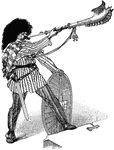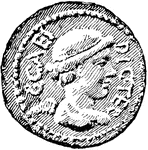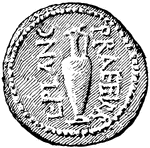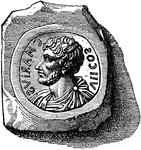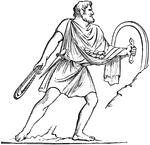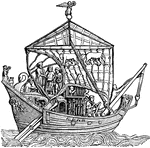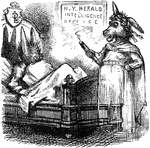
Grant's Caesarism Appears to Bennett
President Grant's Caesarism image appears to New York Herald Editor Bennett again.
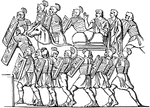
Hollow Square
Military formation of the Romans, also agmen quadratum. Square formation with no troops in the middle.
!["[Caesar] mustered the soldiers in the Campius Martius, and requested a statement of their grievances. Their demands appeared to have a reference to a payment of their dues, the bestowal of promised presents, and a release from further duty. Caesar well knew that the best way to humiliate an insurrection is to grant what it clamors for. He accordingly made an address to his old legion, being careful to begin with "Citizens," instead of "Soldiers." This was gall and wormwood. To be addressed as citizens by their beloved commander! "I discharge you." said he. "You have had enough of fatigue and wounds. I release you from your oath. As to your presents, you shall be paid to the last sesterce." The old veterans could stand no more. They burst into tears, and began to beg for forgiveness. With a certain prudent hesitation, Caesar received them back to favor; but he took care that the leaders who had fomented the mutiny should be executed."—Ridpath, 1885](https://etc.usf.edu/clipart/78900/78945/78945_citizens_01_mth.gif)
Citizens! I Discharge You.
"[Caesar] mustered the soldiers in the Campius Martius, and requested a statement of their grievances.…

Pompey the Great
A Roman general; born in 106 B.C. He distinguished himself against the enemies of the Roman senate,…
Roman Siege Works
A Roman Siege Works, with A and B, a double wall; C, C, C, Vineæ; D, an Agger; E, a movable tower;…
Caesar Crossing the Rubicon
An image of Julius Caesar and his army crossing the Rubicon River, which is located in northeastern…
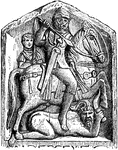
Sueve and Roman Rider
A Roman rider battling a Sueve. Suevi were Germanic people that posed a threat to the Romans.

Gallic Torques
Gallic Torques were heavy necklaces of braided metal. Gauls carried their wealth in the form of Gold…

Vinea
A Vinea, or Testudo, a small structure framed with wood used to protect soldiers attacking city walls.

